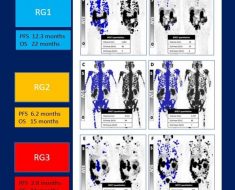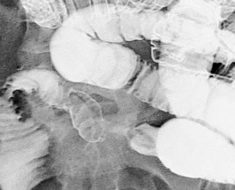Cancer symptoms: Top 14 early signs to look out for
We use your sign-up to provide content in ways you’ve consented to and to improve our understanding of you. This may include adverts from us and 3rd parties based on our understanding. You can unsubscribe at any time. More info
Experts have warned that delays caused by coronavirus disruptions could take years to clear, which could lead to harsher prognoses for patients. In a bid to soften the impact, health bodies are boosting efforts to raise awareness of the warning signs of cancer. The symptoms most commonly associated with cancer are unexplained fatigue and dramatic shifts in body weight. Two worrying signs of blood cancer, however, may be apparent on the skin.
Blood cancers are the third largest cause of cancer death in the UK and comprise the fifth largest group of the disease.
In fact, official figures suggest more than 40,000 people will be diagnosed with the disease annually.
Macmillan Cancer Support explains: “Faster growing leukaemia such as acute myeloid leukaemia or acute lymphoblastic leukaemia, are more likely to cause symptoms that appear over a few weeks.
“People often fall ill quite quickly.
READ MORE: Cancer: The tea ‘linked’ to a tripled cancer risk – ‘equivalent’ to smoking 100 cigarettes

“Most symptoms of acute leukaemia are caused by leukaemia cells filling the bone marrow. This means healthy blood cells do not move into the blood as normal.”
Signs that the blood is a disease can manifest in a plethora of ways.
The most common typically comprise dramatic shifts in weight, alongside swelling of the lymph nodes or an enlarged liver.
Recurrent nosebleeds may occur as the cells in the bone marrow prevent the production of blood-clotting cells.
But bruises and rashes have also been reported in connection to blood cancer.
The health body Blood Cancer explains: “Bruises generally start as red patches which change colour and get darker over time.
“They often feel tender. One black and brown skin, bruises may be difficult to see initially, but as they develop they show up as darker than the skin around them.
“Rashes often appear as clusters of tiny spots or larger blotches. On black and brown skin, they may look purple or darker than the surrounding skin.

“On lighter skin, they typically look red or purple. If you press on them, petechiae and purpura don’t fade.
“Most people who have symptoms described [here] won’t have blood cancer.”
Cancer symptoms are often ill-defined, and a large number of bodily changes end up being a reflection of other non-cancerous ailments.
“But it’s worrying to have symptoms you can’t explain, and important to find out what’s causing them if only to set your mind at rest,” adds Blood Cancer.

How to prevent blood cancer
Like most forms of cancer, blood cancers reflect chances in the DNA within blood cells, which leads to abnormal behaviour.
Factors that affect one’s risk of the disease can include exposure to chemicals or radiation, but a large number of cancers result from ethnicity, sex and age.
Unlike other types of malignancy, however, lifestyle changes such as diet have little effect on one’s risk of developing blood cancer.
Regular exercise and a good diet can however go a long way to avert other forms of the cancer.
Source: Read Full Article





